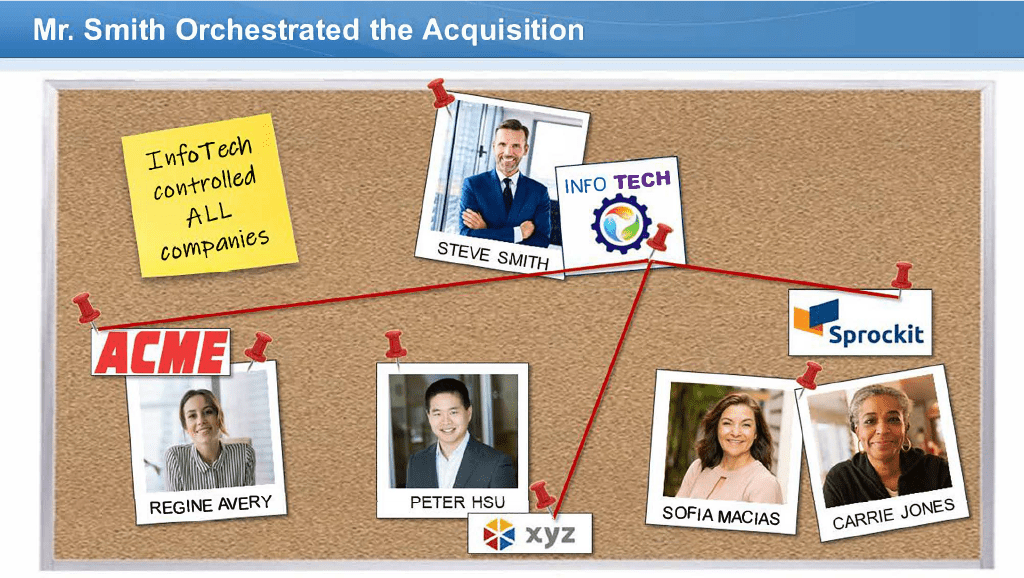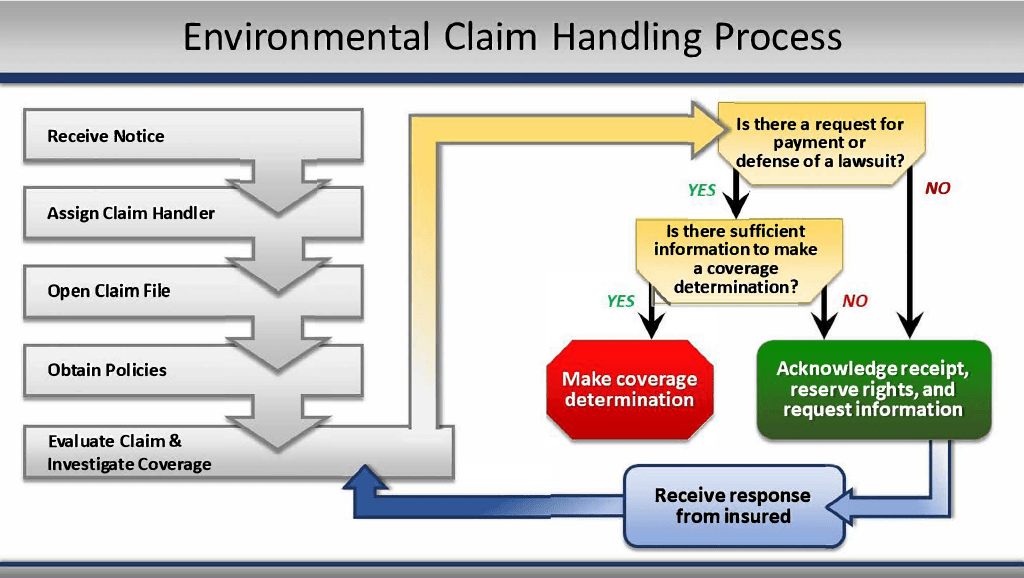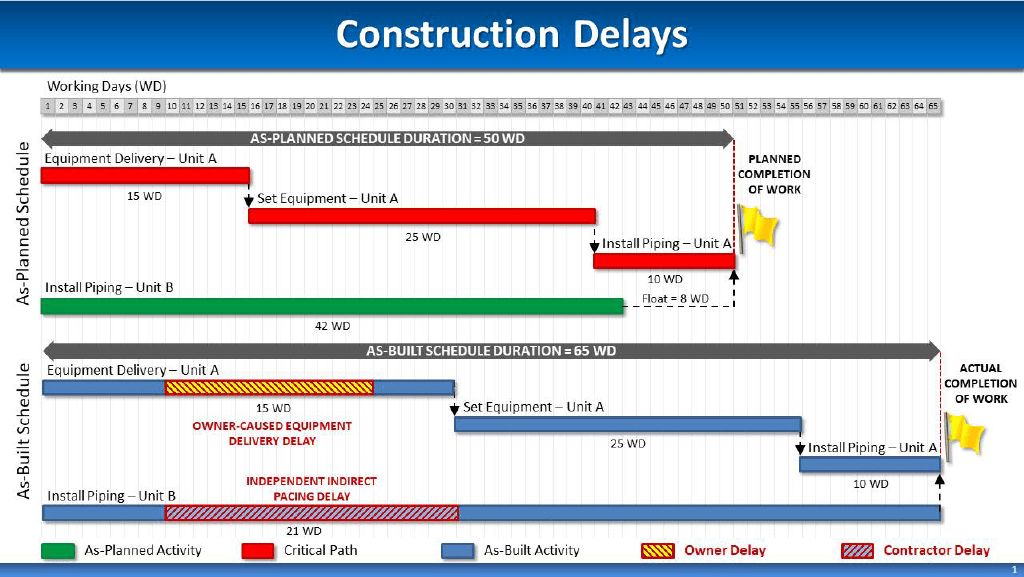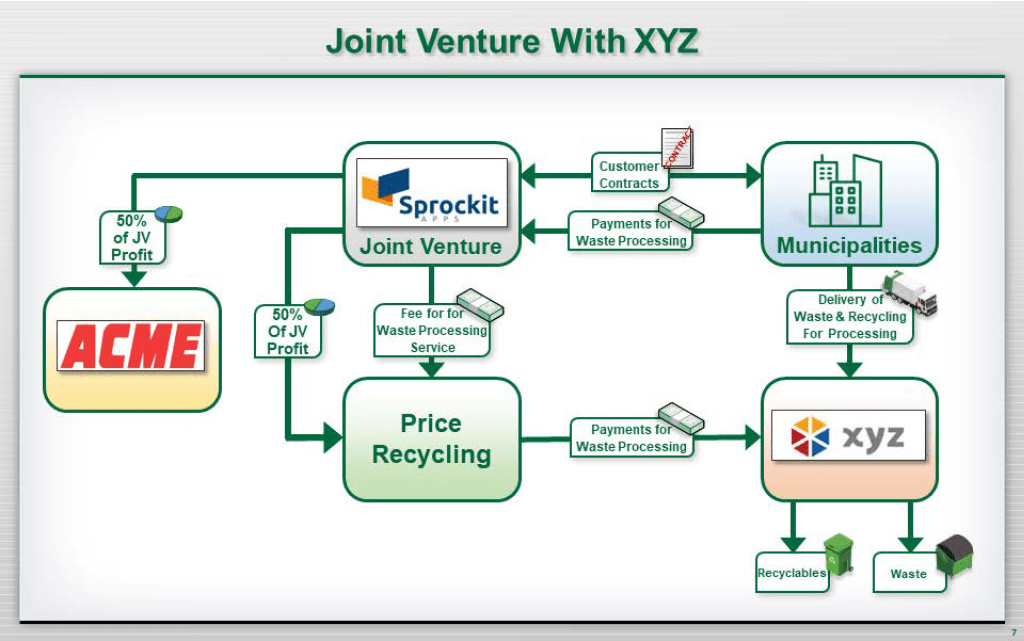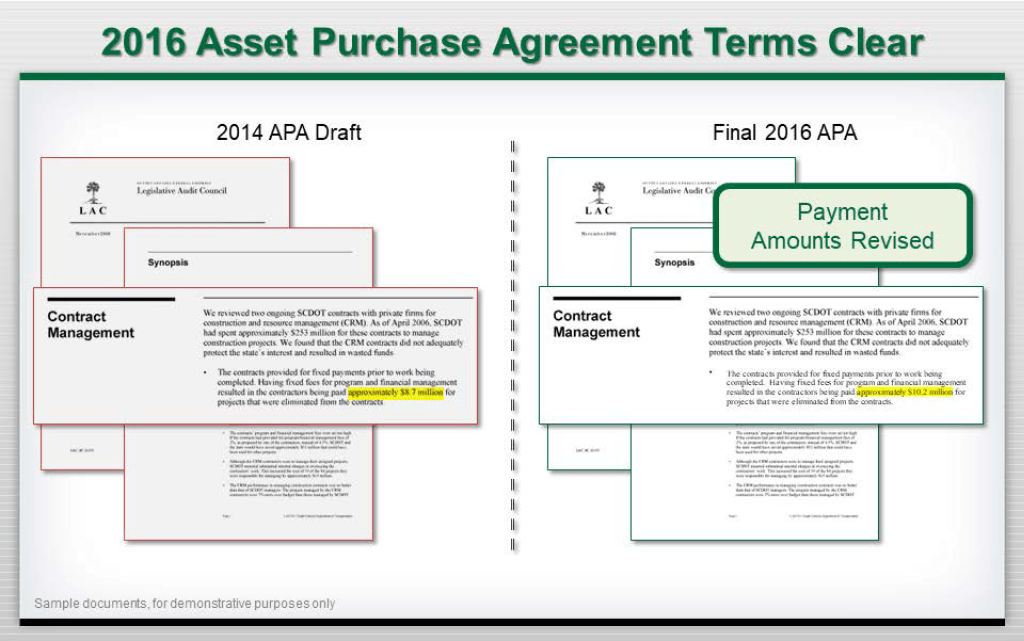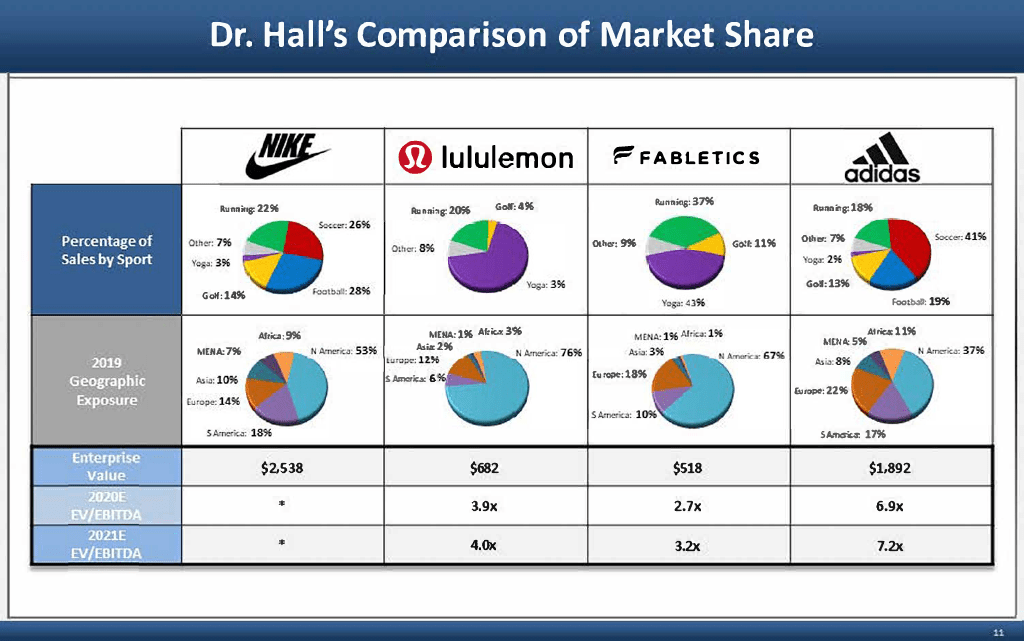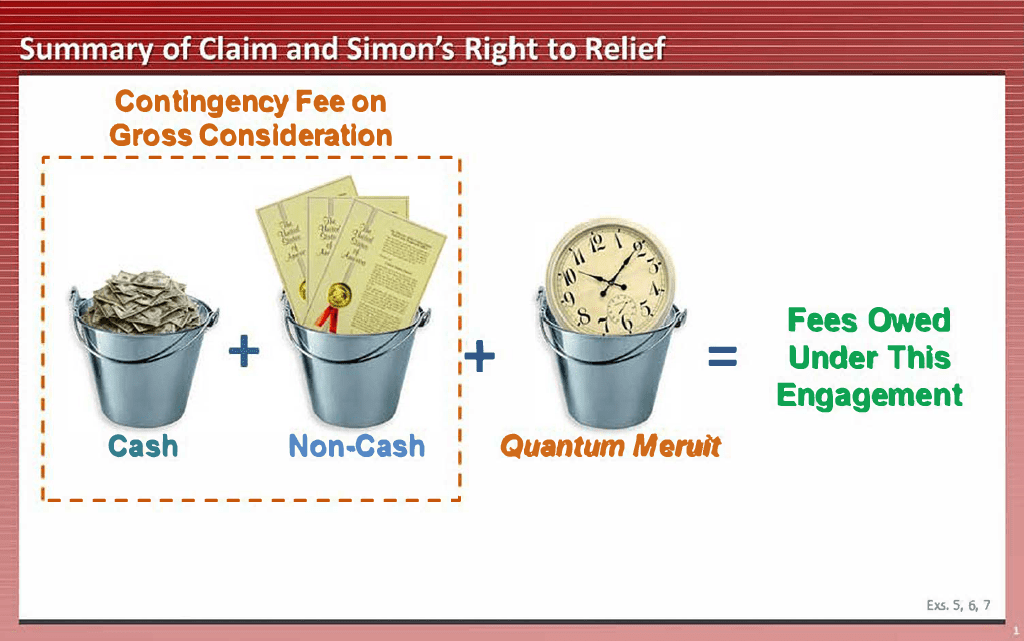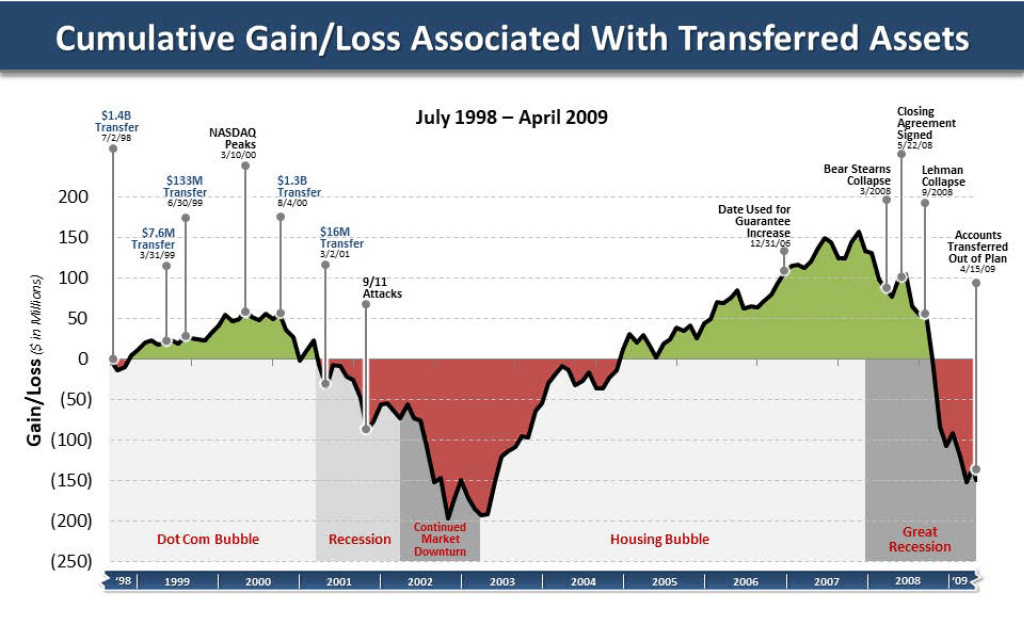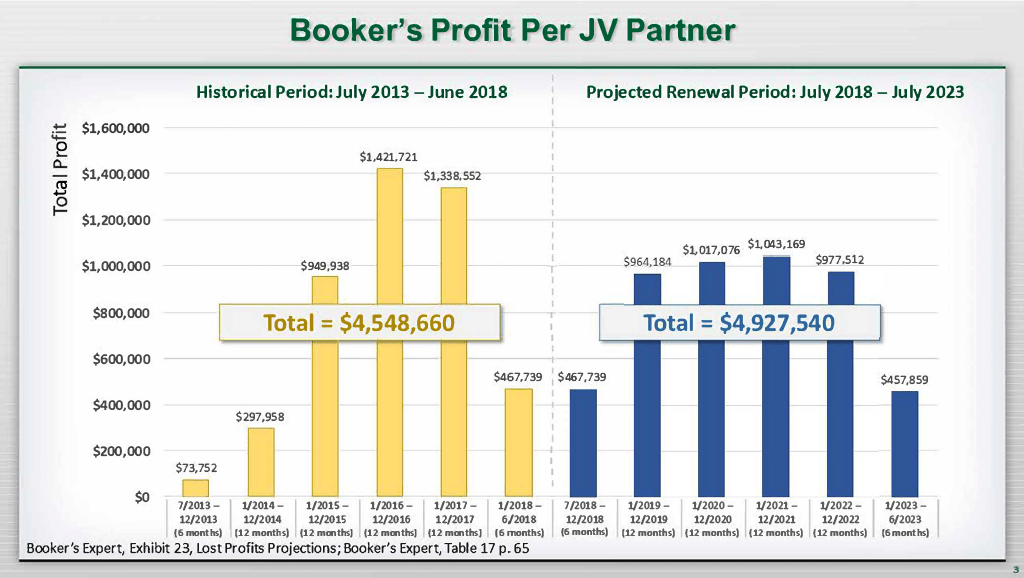In today’s courtroom, legal teams are expected to present complex information quickly, clearly, and with precision. That’s where trial prep and presentation software comes in – designed to equip attorneys with powerful tools that help them build a persuasive case, prepare thoroughly, and present compellingly. These tools not only boost efficiency but also ensure that no detail gets lost in the shuffle.
From visual storytelling to deposition management, here’s how the right trial prep software and presentation tools can transform how legal teams prepare and present their cases.
Essential Tools to Build and Deliver a Winning Case
1. Timeline Builder
Oftentimes, trial teams create chronologies of their cases without realizing that they will later need to expand them into visual presentations. Since cases are typically presented to juries and judges in chronological flow, these visuals can become the backbone for organizing key information. Therefore, crafting clear and compelling visual timelines is crucial. Yet litigation support professionals often struggle with making timeline graphics both effective and easy to understand.
A well-organized timeline is critical to telling a cohesive story in court. Trial prep software like the Nextpoint Timeline Builder allows attorneys to plot key events in a visual format, making it easier to explain the chronology of a case to a jury. With Theater Mode, you can highlight and call out documents in real time, ensuring jurors follow along while keeping the presentation dynamic and engaging.

2. Live Document Callouts
Presenting a document graphically to the jury or fact-finder is the perfect opportunity to instantly highlight key details with a document callout. Live document callouts allow you to bring up key evidence, annotate it, zoom in, and highlight important sections – all while keeping the jury focused. With this real-time tool, you can ensure that no piece of evidence is overlooked, making your case even more persuasive.
There are three types of ways to present a document call-out: With trial presentation software such as Nextpoint, with a static exhibit with content highlighted, or with a PowerPoint presentation. We’ve spent years observing paralegals and associates painstakingly comb through stacks of document for trial. That’s why we developed Theater Mode in Nextpoint – to streamline the process and tackle the time-consuming tasks that bog down both our creative services team and the legal professionals they assist.
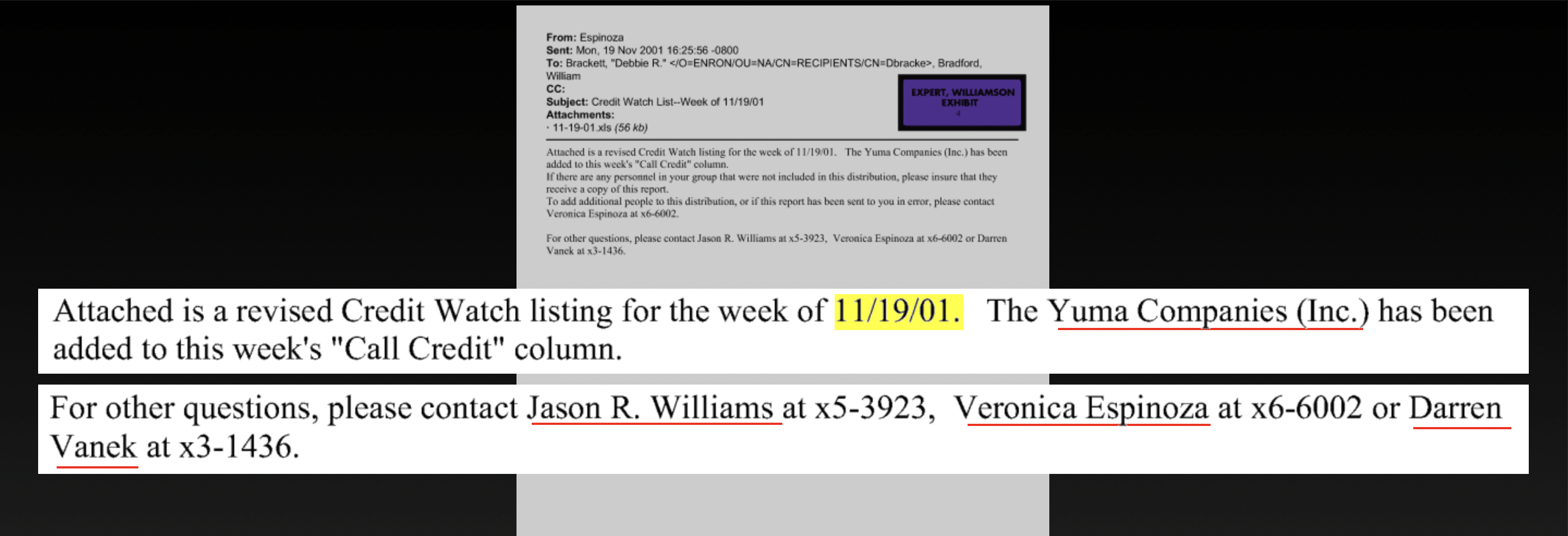
3. Deposition Video Tools
From the early days of TV to the memes of TikTok, video has become increasingly mainstream, accepted, and even expected. We can function without video, but the addition of a visual component is much more compelling and effective.
There are times where video depositions aren’t just convenient – they’re essential. Imagine an expert located across the country who can’t spare a full day of travel or a witness who’s stationed overseas for military duty. Video recording allows them to testify without the hassle and cost of in-person appearances. Most courtrooms now support video playback, which makes setting up and presenting video evidence in courtrooms simpler and more efficient than ever, allowing teams to focus on delivering impactful testimony.
To make presenting videos even more seamless, trial software includes export tools that let you cut to specific timestamps. By eliminating the need to manually scroll through footage, these tools ensure your video evidence is delivered with precision. In Nextpoint, you can use Theater mode to seamlessly display pre-selected video clips for your trial audience.
For more on managing and making the most of your deposition transcripts, check out our deposition transcript blog series, divided into Parts 1-3, where we cover anything from organizing transcripts to leveraging video alongside text for a seamless workflow.

4. Story Building Tool
In the world of trial preparation, creating a compelling case narrative is as important as the evidence itself. Every story has facts, issues, and people at its core – and for legal teams, building an organized, persuasive story out of complex details is vital for resonating with juries and judges alike. This is where a story building tool comes in, which can transform your raw data into impactful visuals that bring clarity and support your arguments.
Nextpoint’s Case Chronology feature is designed to help you organize and present your case in a way that maximizes impact. By linking facts, highlighting critical issues, and identifying key people involved in the case, our trial prep software empowers legal teams to build a narrative that’s clear, persuasive, and visually engaging.
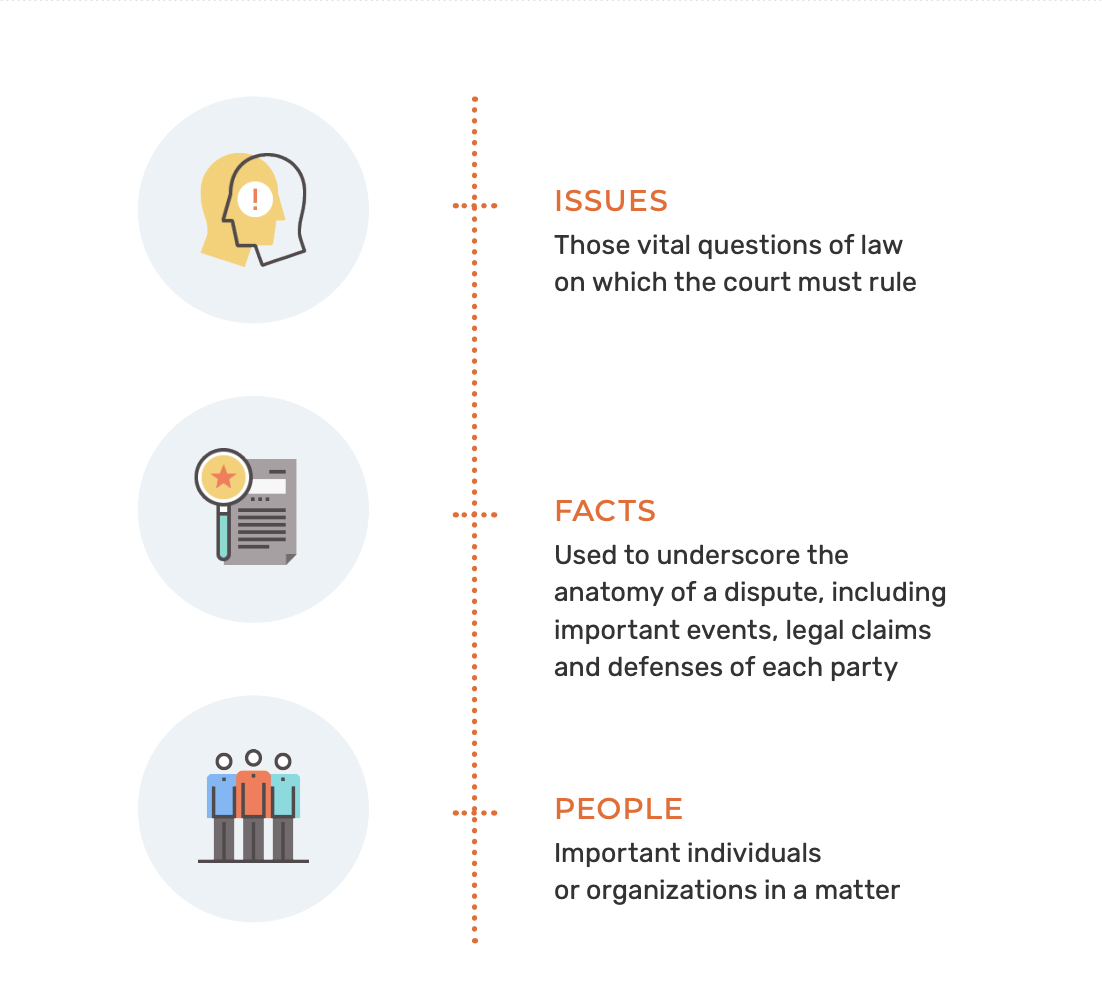
5. Physical Tools
Physical tools, such as pointers, a laser, and clickers can further enhance your trial presentation. These tools allow you to emphasize specific details in documents or photos, which guide the jury’s attention to critical evidence.
If you want to make the most of these tools, consider getting a hot seater – an experienced trial technician who manages all the technology behind the scenes so you can focus on presenting. A hot seater ensures your presentation runs smoothly, helping you transition seamlessly between visuals, depositions, and exhibits.
Yet, even the best tools have their limitations. For instance, laser pointers may not always register on modern TVs/monitors, leaving you unable to direct attention as planned. It’s a small but significant hiccup that can disrupt the flow of your presentation.
Picture this: you’re in court about to deliver a knockout argument. You point your trusty laser at a key exhibit on the big screen – only to find that the pointer doesn’t register on the TV or the monitor. Cue the awkward silence.
That’s where hard copy demonstratives save the day. These tangible materials act as your fallback, ensuring you’re always prepared. While high tech trial tools are indispensable, a hybrid approach that includes hard copy demonstratives ensures you’re prepared for every scenario. So, before you ditch paper entirely, consider keeping a few printed backups in your arsenal. It might just save your case – and your confidence.
6. Evidence Dashboard
Say goodbye to the days of email chains and scattered notes. With an evidence dashboard, your whole legal team can access, annotate, and analyze evidence in real-time – no matter where they are.
When it comes to trial prep, having the right tools can make or break your case. Think of an evidence dashboard as your case’s digital filing cabinet, only smarter. With a centralized, searchable hub, you can organize massive amounts of data (emails, docs, videos) and retrieve key evidence easily. Categorize by relevance, tag by dates, or track chains of custody; everything is neatly organized so you never have to scramble for a document again.
You can log objections as they happen and categorize them alongside the judge’s rulings. It also tracks admitted exhibits, maintaining a running list to ensure your presentation stays compliant and organized. Additionally, it monitors motion in limine rulings, helping you stay on top of pre-trial decisions that dictate what evidence can and cannot be presented, so you can avoid costly missteps. These features make trial presentation tools indispensable for modern litigation teams.
An evidence dashboard in a comprehensive litigation tool like Nextpoint can help you do things like:
- View a breakdown of your facts, issues, and people
- Track the total number of documents, key documents, and deponents
- Access a document overview broken down by date
- Add and share case notes collaboratively with your team
- Pin your favorite folders for quick access
- Identify your most viewed documents
- Maintain a list of deponents with linked exhibits
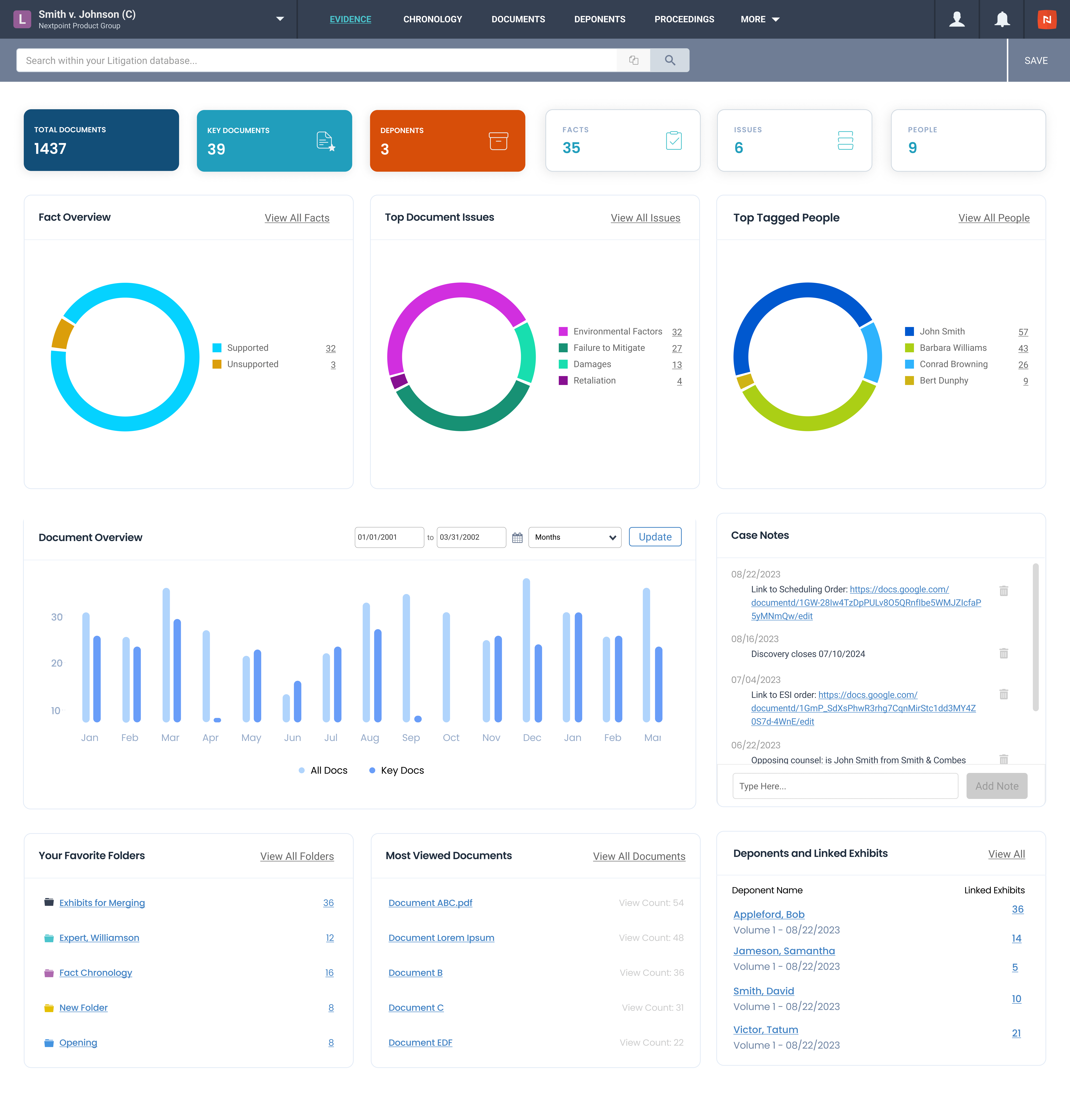
7. Demonstrative Exhibits
We’ve all been there – sitting through a presentation, whether in a classroom or a meeting, where even the most interesting topic starts to feel like a slow march toward boredom. Attention drifts, key points get missed, and suddenly, you’re playing catch up.
Jurors experience trials the same way. Even when the subject matter is high-stakes, courtroom proceedings often blend critical evidence with tedious details, and cross-examinations can muddy the clarity of a previous testimony.
Visual and audio demonstratives serve as an antidote to this monotony by grounding the jury’s focus and enhancing their understanding. During trial, demonstratives transform complex testimony information into digestible, memorable visuals that help jurors grasp the nuances of a case. Beyond improving comprehension, a well-placed demonstrative can redirect attention to the evidence that supports a client’s position, ensuring that the jury stays aligned with the story the attorney is telling. Additionally, demonstratives can tie together multiple strands of evidence, presenting them as a cohesive whole that helps jurors see the big picture.
Common types of visual demonstratives used in court include:
- Timelines
- Diagrams and charts
- Maps and blueprints
- Video and audio recordings
- 3D models or animations
Examples of demonstratives created by the Nextpoint trial services team
★ Talk To Our Trial Experts
Nextpoint’s trial services team helps improve your level of trial advocacy by streamlining the technical, logistical, and mechanical tasks that come with trial prep. With expert support and comprehensive trial prep software, you can save valuable time and reduce costs while ensuring your case is presented with clarity and impact. Talk to our trial experts today.
Want to learn more? This guide is your ultimate resource for mastering case preparation and trial presentation.





